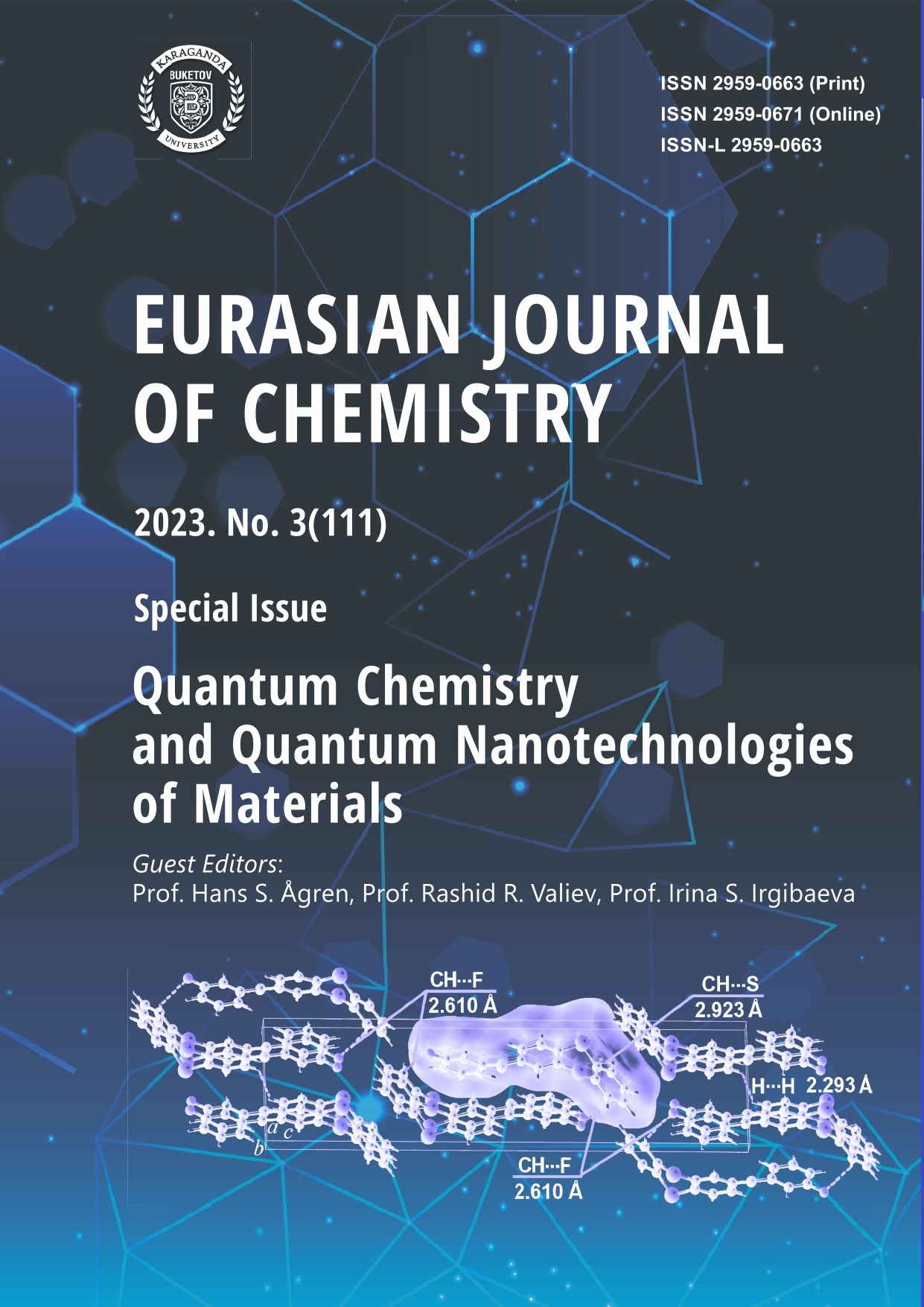Quantum-Chemical Study of Aggregation of 5-(4'-Dimethylaminobenzylidene)Barbituric Acid
DOI:
https://doi.org/10.31489/2959-0663/3-23-15Keywords:
barbituric acid, electronic spectra, dye molecules, aggregation-induced emission, theoretical study, hydrogen bond, electronic states, valence vibrationsAbstract
Decreasing fluorescence efficiency in the solid-state is general and is mainly attributed to the intermolecular vibronic interactions, which induce the nonradiative deactivation process. Whereas the isolated dye molecules are virtually non-luminescent in dilute solutions, they become highly emissive upon solution thickening or aggregation in poor solvents or in the solid-state show an increase of luminescence intensity, the phenomenon of the aggregation-induced emission (AIE phenomenon). The development of efficient luminescent materials is a topic of great current interest. Theoretical calculation shows that the dye molecules' aggregation-induced emission characteristics result from intermolecular interactions. Utilizing such features, the molecules can be employed as fluorescent probes for the detection of the ethanol content in aqueous solutions. Quantum-chemical calculations using the method of density functional theory the computations of structure and electronic spectra of aggregated forms of 5-(4’-dimethylaminobenzylidene)barbituric acid and the Gaussian 98 program packages have been performed. The unusual spectral behavior of 5-(4’-dimethylaminobenzylidene)barbituric acid was investigated theoretically by the DFT method and its time-dependent variant TDDFT. Carried out calculations using Zindo, as well as ab initio calculations, confirm the appearance of a new band during aggregation and its shift to the red region when the number of molecules increases.
Downloads
Published
How to Cite
Issue
Section
License
This work is licensed under a Creative Commons Attribution-NonCommercial-NoDerivatives 4.0 International License.
Authors retain copyright and grant the journal right of first publication with the work simultaneously licensed under a Creative Commons Attribution License (CC BY-NC-ND 4.0) that allows others to share the work with an acknowledgement of the work's authorship and initial publication in this journal.




